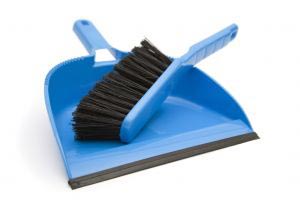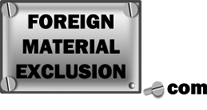 Unless you plan on treating all of the tools and equipment in storage as disposable, cleanliness will be a required aspect of an effective foreign material exclusion program. Debris on tools can become the unwanted source of contamination.
Unless you plan on treating all of the tools and equipment in storage as disposable, cleanliness will be a required aspect of an effective foreign material exclusion program. Debris on tools can become the unwanted source of contamination.
Cleanliness can be maintained through frequent cleaning and item replacement, but with a little forethought, you can keep the amount of cleaning and replacing to a minimum. Purchase equipment made from non-porous materials to simplify the cleaning process and allow for significantly less debris build-up. Using tools that lack hard to reach crevices also make cleanup easier and reduce the likelihood that hidden debris may make it into sensitive areas. For these reasons, lanyards and tools that are planned for use in dirty jobs should be non-porous and “crevice limited” as much as possible.
Cleanliness is also important in applications where the debris that builds up on tools may be harmful to personnel or the environment. If a tool contains a large amount of harmful debris after use on a job, such as toxic leftovers, it may be determined that the tool will no longer be suitable for use on further jobs. There is a chance, however, that using tools made from cleanable materials will prevent the decision to dicard the tool. In other words, having a tool made of easy to clean material increases the usable life of the tool, resulting in savings to the company.
General housekeeping is also good practice during FME related work. Keeping an area as clean as possible at all times will decrease the likelihood that a piece of material will enter a sensitive component. Keeping the proper equipment on the job-site will promote cleanliness.
For example, FME work area barriers can use measures such as sticky mats to ensure that dust and debris does not intrude. These mats prevent the entry of dust and chemicals that may have accumulated on employees’ feet.


 Use our lanyard selection form and we'll help you get the right lanyards for the job.
Use our lanyard selection form and we'll help you get the right lanyards for the job.